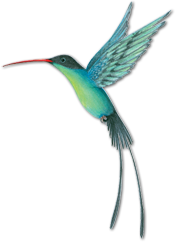Farms: Farmers: Farming Partnerships: Foot and Mouth: Compensation: Partnerships: Livestock: Dairy Herds: Sheep: Capital Payments: Profits: Dissolution: Partnership Act 1890.
Compensation monies received by a partnership as a result of a cull of livestock represented a capital payment to be divided equally between the partners subject to an indemnity to the defendant to represent the costs he incurred in keeping the livestock alive between the date of the dissolution of the partnership until the cull.
(1) Greta Emerson (Executrix of the estate of James Henry Emerson, Deceased) (2) Harry Emerson v Thomas Matthew Emerson (Deceased) (2004).
The defendant (T) appealed the decision of HH Judge Behrens in proceedings to determine the distribution of assets following the dissolution of a partnership. T was in a farming partnership with his brother (H). The partnership business comprised two farms and livestock. H died in August 1998 the effect of which was to dissolve the partnership under s.33(1) Partnership Act 1890. However, T continued the farming business, in particular, he carried on the livestock enterprise. In April 2001 the livestock was culled under the policy adopted to contain foot and mouth disease and in due course T received £119,000 compensation. These proceedings were commenced by those acting for the estate of H seeking to determine how the compensation was to be divided out of the dissolved partnership. The judge asked himself whether the compensation monies were profits made since the dissolution of the partnership for the purposes of s.42(1) of the Act, and would fall to be determined at the court’s discretion, or whether they represented a capital payment to be shared equally between T & H. The judge concluded that the monies represented a capital payment. On appeal T argued that the compensation monies fell to be determined under s.42(1) of the Act and were therefore at the discretion of the court. In the alternative, T argued that if the monies did represent a capital payment, then he was at least entitled to recover expenses he had incurred in the course of keeping the partnership enterprise going.
HELD: The judge was correct to conclude that the compensation monies represented a capital payment to the partnership. He was plainly correct that s.42(1) had no application. The compensation was an amount greater than the value of the livestock at the date of dissolution of the partnership and accordingly the excess was to be treated as a profit for the purposes of s.24(1) of the Act (see Popat v Shonchhatra (1997) 1 WLR 1367). Accordingly, what had to be determined was whether T was entitled to recompense by way of indemnity for costs incurred by him for keeping the livestock alive between the date of dissolution of the partnership until the date of the cull. It was clear from Carver v Duncan (1985) 2 WLR 1010 that T was entitled to be indemnified in that regard.
Appeal allowed.
Lawtel: 9th February 2004



